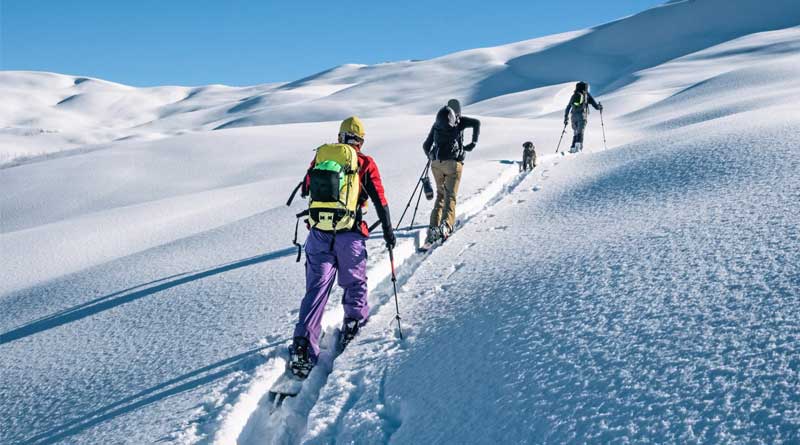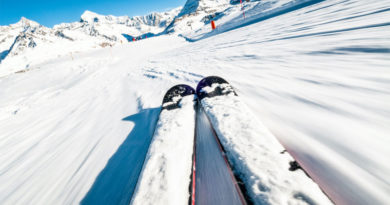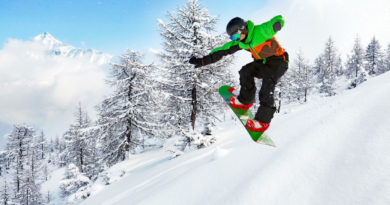What is Alpine Touring Skiing?
Alpine touring skiing, often called AT skiing or ski touring, is a form of backcountry skiing that blends uphill travel with downhill performance. Unlike traditional alpine skiing, where skiers ride lifts to the top of a slope, alpine touring allows adventurers to climb mountains under their own power and ski back down through untracked terrain. It’s an exhilarating blend of mountaineering, skiing, and wilderness exploration—and it’s rapidly growing in popularity among winter sports enthusiasts.
Key Features of Alpine Touring
At its core, alpine touring involves traveling through snowy, mountainous terrain using specialized gear that allows both climbing and skiing. The primary distinction lies in the gear and the versatility it offers. Alpine touring skis are equipped with touring bindings that can switch between two modes: one for uphill travel, allowing the heel to lift freely, and one for downhill skiing, where the heel locks down like in standard alpine bindings.
Skiers attach climbing skins to the bottom of their skis for uphill movement. These skins provide grip, allowing skiers to ascend without sliding backward. Once at the summit, the skins are removed, and the bindings are locked for descent. This freedom to ascend and descend without chairlifts opens up a world of untouched backcountry terrain.
The Gear: How Alpine Touring Differs
Alpine touring equipment is purpose-built to balance lightweight uphill performance with solid downhill capability. Here’s a breakdown of key gear components:
-
AT Skis – These are often lighter than regular downhill skis and may feature a slightly rockered design to handle variable snow.
-
AT Bindings – Touring bindings pivot at the toe for climbing and lock down at the heel for skiing. There are frame bindings (heavier, more robust) and tech bindings (lighter, more efficient for long climbs).
-
Ski Boots – Touring boots are lighter and have a walk mode, allowing the ankle to flex for a more natural stride uphill.
-
Climbing Skins – Made of synthetic or mohair material, these are attached to the base of the ski to prevent sliding backward when climbing.
Other essential items include avalanche safety gear—transceiver, probe, and shovel—as well as crampons, poles with adjustable length, and proper layering for temperature regulation.
Why Choose Alpine Touring?
There are several compelling reasons to get into alpine touring skiing:
-
Access to untouched terrain – Escape the crowds and enjoy pristine powder in remote locations.
-
Fitness and challenge – Touring offers an intense workout, combining aerobic endurance with strength and skill.
-
Self-reliance and adventure – It’s about route-finding, snowpack evaluation, and decision-making in the wild, making the experience highly rewarding.
-
Environmental impact – Touring has a much smaller carbon footprint than resort skiing since you’re not relying on lifts or infrastructure.
Many skiers begin touring because they seek solitude, love exploring, or simply want a deeper connection to the mountains beyond what ski resorts offer.
Touring Styles and Terrain
Alpine touring isn’t one-size-fits-all. It encompasses a range of styles and objectives, from mellow day tours to high-altitude multi-day expeditions. Here are some common categories:
-
Day Touring – Popular among beginners and casual adventurers, these tours involve short climbs and descents, often near ski resorts or well-traveled routes.
-
Ski Mountaineering – A more technical form that combines skiing with climbing. Ski mountaineers may use ropes, ice axes, and crampons to ascend steep couloirs or glaciers.
-
Fitness Touring – Focused on uphill skiing for exercise, this often takes place on groomed resort slopes during off-hours or in controlled backcountry zones.
-
Expedition Touring – Involves remote, multi-day traverses with camping gear and often extreme weather conditions.
Avalanche Safety: A Core Component
One of the most important aspects of alpine touring is avalanche awareness. Unlike ski resorts, the backcountry is not controlled for avalanche risk. Touring skiers must assess snow conditions, understand terrain traps, read avalanche forecasts, and carry rescue equipment. Many newcomers take an Avalanche Level 1 course to learn the basics of snowpack science, terrain analysis, and companion rescue.
Touring in a group, communicating clearly, and making conservative decisions is key to staying safe in the backcountry. No matter how skilled you are at skiing, knowledge of avalanche danger is essential.
Planning a Tour: What to Consider
Planning is everything in alpine touring. Before heading out, skiers should:
-
Check the avalanche forecast from local avalanche centers.
-
Study maps and route descriptions.
-
Know the weather forecast and prepare for rapid changes.
-
Pack a trip plan with timing, goals, and emergency contacts.
Navigation tools such as GPS, altimeters, and physical maps are often used together to ensure accurate route-finding. A backup plan is always wise, especially in unpredictable conditions.
Physical Demands and Skill Requirements
Alpine touring demands solid physical conditioning. Uphill travel at high altitudes can be grueling, especially with a heavy pack. Skiers must also be confident downhill in variable, often difficult snow—powder, crust, wind slab, or breakable crust. Good backcountry skiers are adaptable, efficient, and cautious.
While technical skills can be learned, a base level of fitness and comfort in wild environments is crucial. Even short tours can be physically taxing, and preparation is the key to enjoyment and safety.
Alpine Touring vs. Other Skiing Disciplines
Alpine touring sits somewhere between alpine skiing and Nordic skiing. Here’s how it compares:
-
Alpine skiing: Lift-accessed, groomed runs, less physical exertion, but limited to resorts.
-
Cross-country skiing: Lighter gear, flatter terrain, often not suitable for downhill slopes.
-
Splitboarding: Snowboarders’ version of alpine touring—boards split into two skis for uphill and reassemble into a board for descent.
-
Telemark skiing: A distinct style with free-heel bindings for both uphill and downhill turns.
AT skiing combines the freedom and athleticism of cross-country with the thrill of alpine descents.
Final Thoughts: Is Alpine Touring for You?
Alpine touring offers a rich, challenging, and deeply rewarding way to experience winter in the mountains. Whether you’re in search of untouched powder, a fitness challenge, or remote solitude, touring delivers a unique form of skiing that taps into exploration and self-reliance.
It’s not for everyone—it requires gear, preparation, and a willingness to take on risk and responsibility. But for those who invest the time to learn and grow, alpine touring can open up a lifetime of unforgettable adventures.




